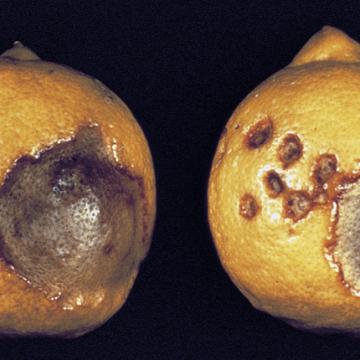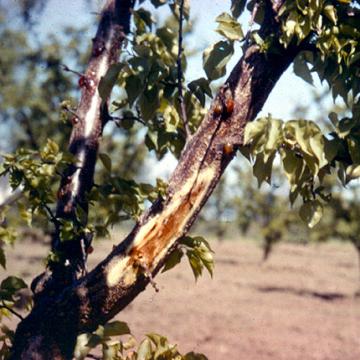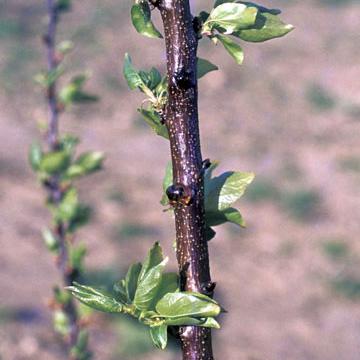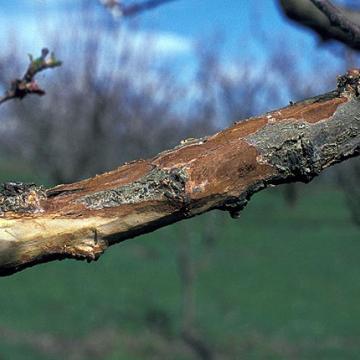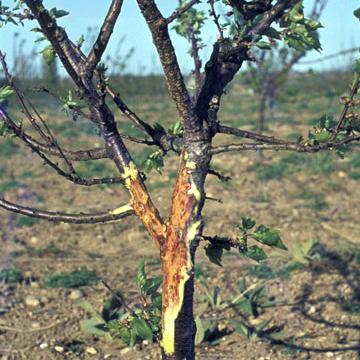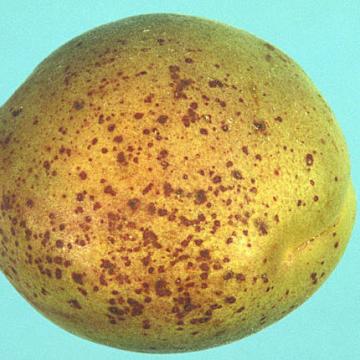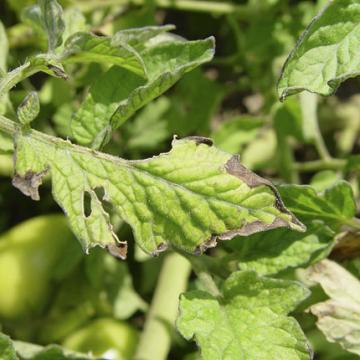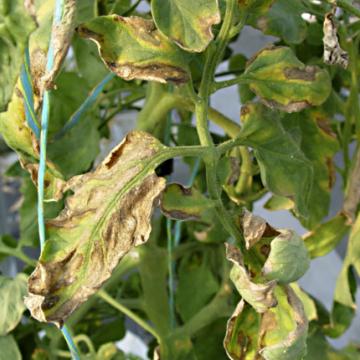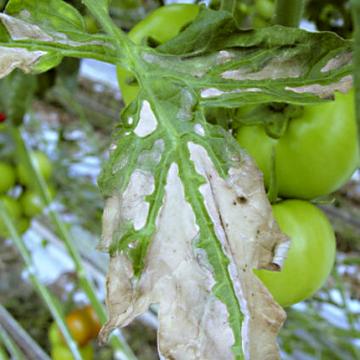DISEASE: Bacterial blast and black pit
HOST: Citrus (Lemon)
The term "black pit" refers to black lesions on fruit, which may be specks or large, sunken pits as seen here. They also may be light tan, later becoming reddish brown to black.
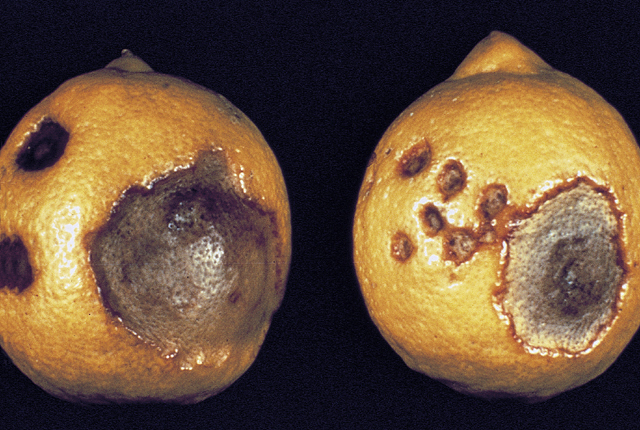
Bacterial blast and black pit | Citrus (Lemon)
DISEASE: Bacterial blast and black pit
HOST: Citrus (Lemon) (Citrus limon)
PATHOGEN: Pseudomonas syringae pv. syringae
SOURCE: J. Menge
DISEASE: Bacterial canker and blast
HOST: Apricot
Apricot with typical reddish brown-discolored tissues beneath the bark and gumming around infected areas.
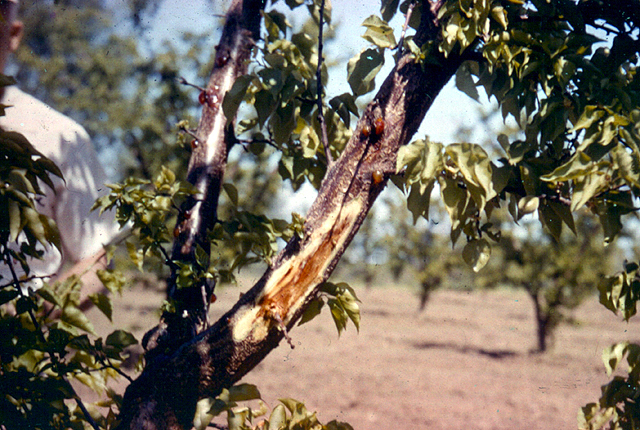
Bacterial canker and blast | Apricot
DISEASE: Bacterial canker and blast
HOST: Apricot (Prunus armeniaca)
PATHOGEN: Pseudomonas syringae pv. syringae
SOURCE: S. Sampson, M. Shurtleff
DISEASE: Bacterial canker and blast
HOST: Apricot
Young infected twig with droplets of bacterial ooze on stem.
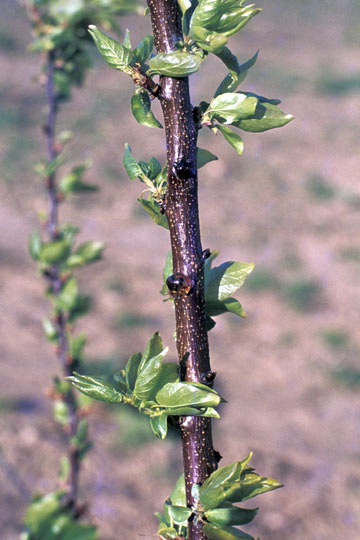
Bacterial canker and blast | Apricot
DISEASE: Bacterial canker and blast
HOST: Apricot (Prunus armeniaca 'Moorpark')
PATHOGEN: Pseudomonas syringae pv. syringae
SOURCE: J. Young
DISEASE: Bacterial canker and blast
HOST: Apricot
Bacterial canker has many symptoms. Typical symptoms are brown, sometimes reddish brown, internal tissues and rough, cracked bark.
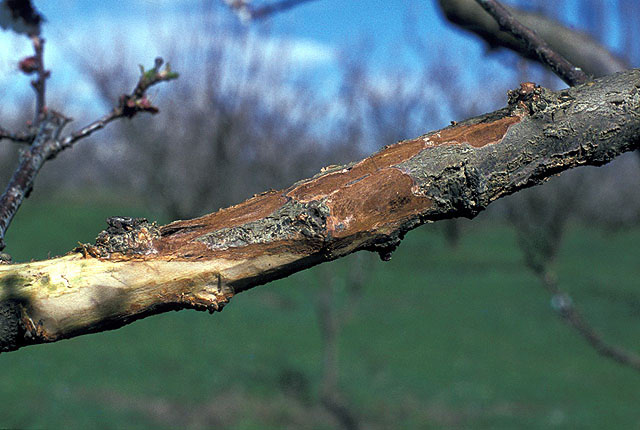
Bacterial canker and blast | Apricot
DISEASE: Bacterial canker and blast
HOST: Apricot (Prunus armeniaca 'Moorpark')
PATHOGEN: Pseudomonas syringae pv. syringae
SOURCE: J. Young
DISEASE: Bacterial canker and blast
HOST: Apricot
Infected apricot with sparse foliage (some twigs with no foliage) and a discolored area exposed where bark was removed.
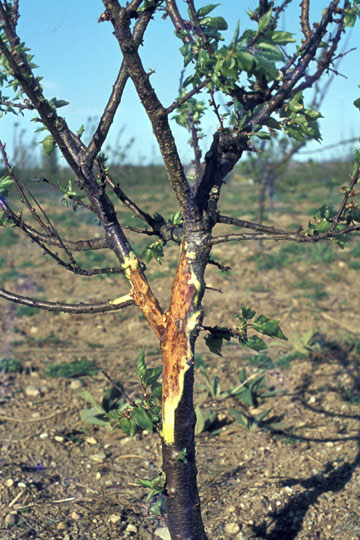
Bacterial canker and blast | Apricot
DISEASE: Bacterial canker and blast
HOST: Apricot (Prunus armeniaca 'Moorpark')
PATHOGEN: Pseudomonas syringae pv. syringae
SOURCE: J. Young
DISEASE: Bacterial canker and blast
HOST: Apricot
Fruit spot phase with numerous reddish necrotic spots.
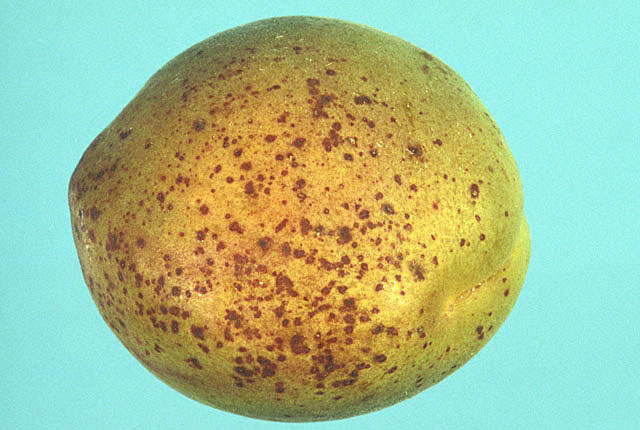
Bacterial canker and blast | Apricot
DISEASE: Bacterial canker and blast
HOST: Apricot (Prunus armeniaca 'Moorpark')
PATHOGEN: Pseudomonas syringae pv. syringae
SOURCE: J. Young
DISEASE: Bacterial canker
HOST: Tomato
Necrosis of leaf margins is early symptom of disease.
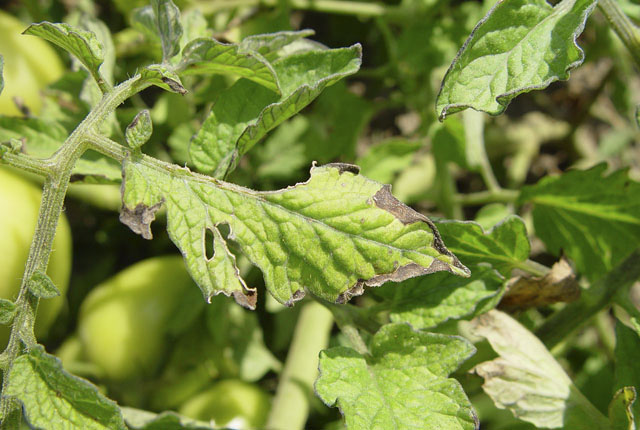
Bacterial canker | Tomato
DISEASE: Bacterial canker
HOST: Tomato (Lycopersicon esculentum)
PATHOGEN: Clavibacter michiganensis subsp. michiganensis
PATHOGEN SYNONYM: Corynebacterium michiganense
SOURCE: S. Miller
DISEASE: Bacterial canker
HOST: Tomato
Leaves with interveinal necrosis.
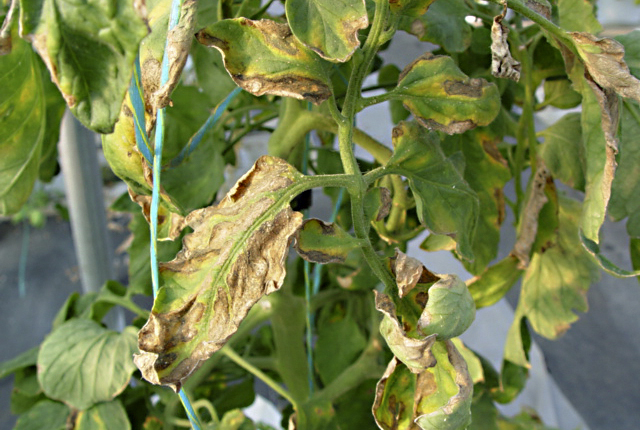
Bacterial canker | Tomato
DISEASE: Bacterial canker
HOST: Tomato (Lycopersicon esculentum)
PATHOGEN: Clavibacter michiganensis subsp. michiganensis
PATHOGEN SYNONYM: Corynebacterium michiganense
SOURCE: D. Ingram
DISEASE: Bacterial canker
HOST: Tomato
Leaves with papery, gray necrotic areas around green veins.
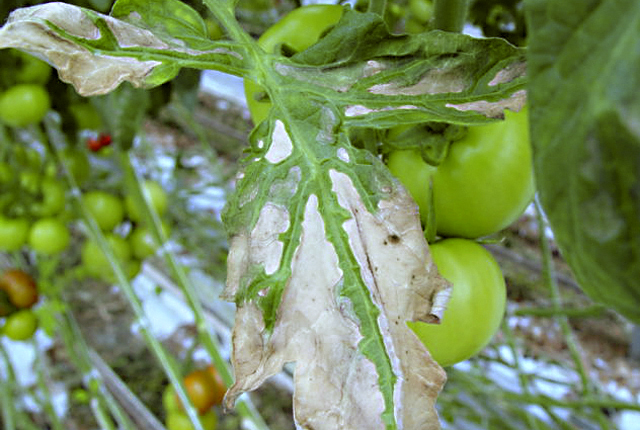
Bacterial canker | Tomato
DISEASE: Bacterial canker
HOST: Tomato (Lycopersicon esculentum)
PATHOGEN: Clavibacter michiganensis subsp. michiganensis
PATHOGEN SYNONYM: Corynebacterium michiganense
SOURCE: D. Ingram


